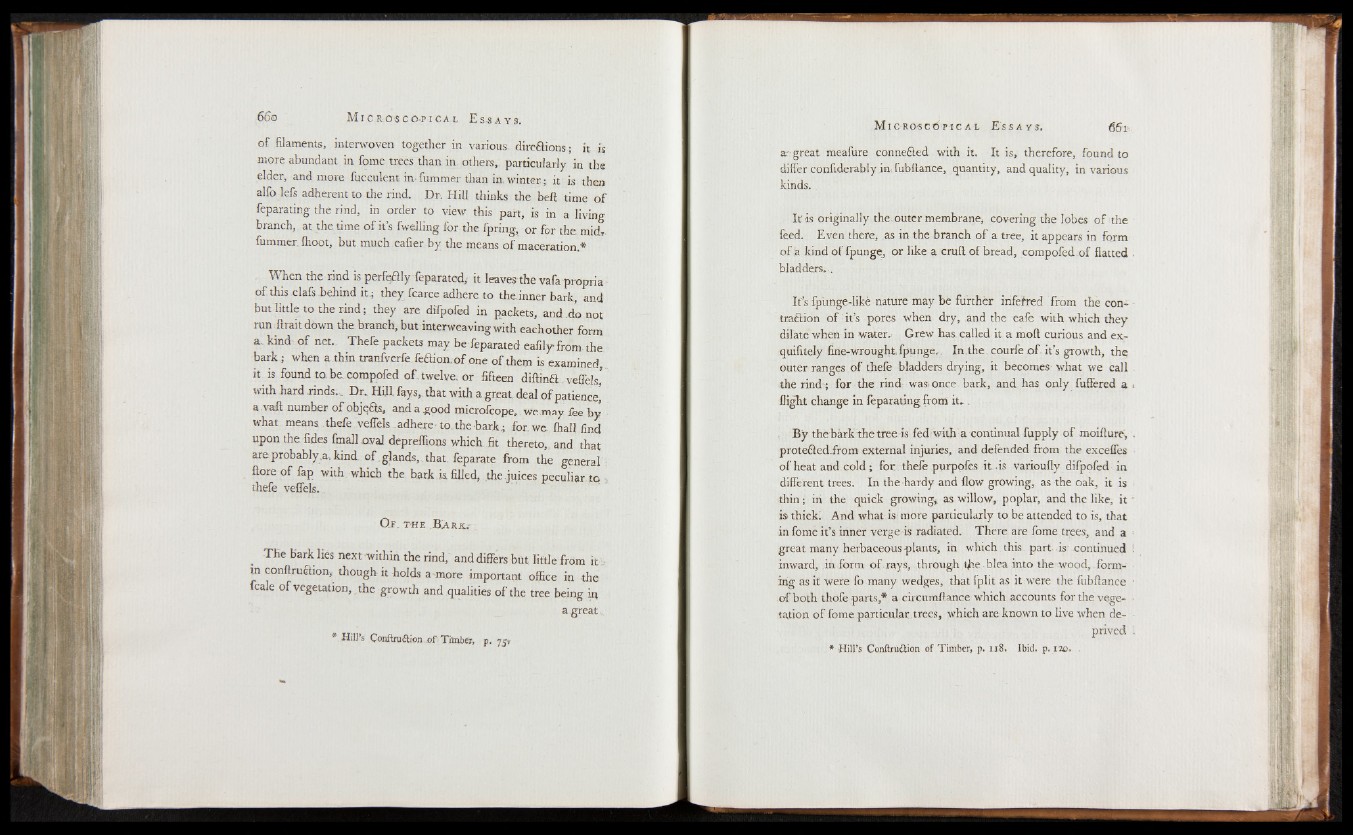
66e> M i c r o s c o p i c a l E s-s a y s .
of filaments, interwoven together in various, directions; it is
more abundant in fome trees than in others, particularly in the
elder, and more fucculent infummer than in,winter; it is then
alfo lefs adherent to the rind. Dr. Hill thinks the beft time o f
feparating the rind, in order to view this part, is in a living
branch, at the time o f it’s fwelling for the fpring, or for the mid*
fummer. Ihoot, but much eafier by the means o f maceration*
When the rind is perfeHly Separated,• it leaves the vafa propria
of this clafs behind it.; they fcarce adhere to theinner bark, and
but little to the rind; they are difpofed in packets, and .do not
run ftrait down the branch, but interweaving with each other form
a ' kiud net.. Thefe packets may be feparated ealily from the
bark ; when a.thin tranfverfe feHiomof one o f them is examined,
it is found to. be. compofed of. twelve, or fifteen d ifth a , vefielsj
with hard rinds.. Dr. Hill fays, that with a great deal o f patience]
a vail number o f objeas, andagood microfcope, we.may fee by
what means thefe veffels .adhere to. the-bark,; for we. lhall find
upon the fides fmall oval depreffions which fit thereto,, and that
are probably.a. kind, of glands,, that, feparate from the general
ftore o f fap with, which the hark is filled, the juices peculiar to
thefe veffels..
Oj. the .Bark.- .
The bark lies next within the rind, and differs but little from it $
in conftruaion, though- it holds a-more important office in the
fcale o f vegetation, the growth and qualities o f the tree being in
a great
ar: great meafure connefted with it. It is, therefore, found to
differ confiderahly in fubftance, quantity, and quality, in various
kinds.
It is originally the.outer membrane, covering the lobes o f the
feed. Even there, as in the branch o f a tree, it appears in form
of a kind of fpunge, or like a cruft of bread, compofedof flatted .
bladders..
It’s fpunge-like nature may be further inferred from the contraction
o f i it’s pores when dry, and the eafe with which they
dilate when in water.. Grew has called it a moft curious and ex-
quifitely fine-wrought,fpunge.. In.the. courfe o f it’s growth, the
outer ranges o f thefe bladders drying, it becomes what we call
the rind-; for the rind was> once bark, and has only fuffered a i
flight change in feparating from it. .
B y thebark thetree -is fed with a continual fupply o f moifture, .
protefted.from external injuries, and defended from the exceffes
o f heat and: cold ; for thele purpofes it .is varioufly difpofed in
different trees. In the hardy and flow growing, as the oak, it is -
thin; in the quick growing, as willow, poplar, and the like, it '
is> thick. And what is more particularly to be attended to is, that
in fome it’s inner verge is radiated. There are fome trees, and a >
great many herbaceous plants, in which this part is-continued i
inward, in form o f rays, through tfre blea into the wood, forming
as it were fo many wedges, that fplit as it were the fubftance •
of both thofe parts,* a circumftance which accounts for the vegetation
of fome particular trees, which are known to live when deprived
1
* Hill’s Conltruclion of Timber, p. u8. Ibid. p. 120. •